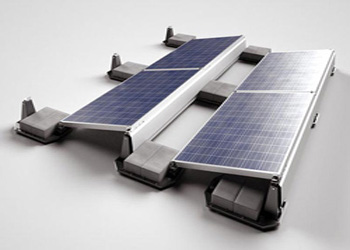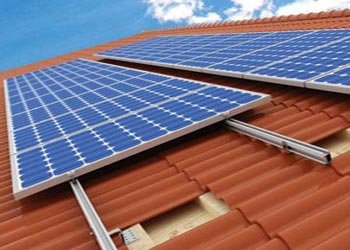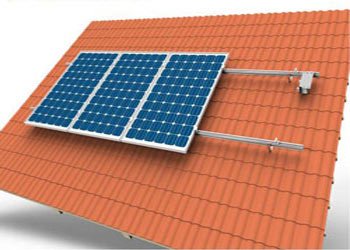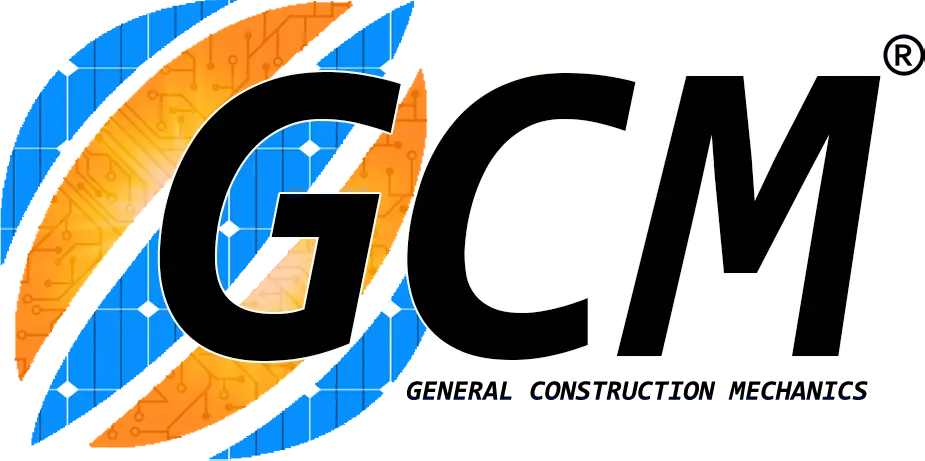If we want to build a large solar power plant that needs a lot of lands to overcome this limitation, building a solar power plant on the existing roof is also a good choice. A solar power plant on the roof can not only maximize the use of unused roof space resources, save on electricity bills, but also cool the house.
Therefore, installing solar power plants on the roof is becoming more and more popular. Common photovoltaic roofs are generally divided into three types: flat concrete roof, colored steel tile roof, tile roof.
Flat Roof

Flat roofs are common in factories, dormitories, and many apartment buildings. The flat roof foundation installation method generally uses concrete and a base seat or uses heavy objects to support the ground. The ceiling does not need to be drilled., and can be attached directly to the ceiling without damaging the original ceiling structure. In this type of roof, we generally choose ballast solar mounts, which have a simple structure and work together with concrete blocks to protect the integrity of the roof as much as possible. There are three other types of flat roof mounts: tripod, ballast, and ground mounts. There are very few grounds supports underneath, which are generally only acceptable for roofs with very large loads. The tripod is made of high-strength aluminum alloy extrusions. The whole body of the installation mainly consists of tripods, base rails, base rail connectors, and middle and end-clamps. Its base can be installed by a penetration type or a ballast type, and the installation angle of the tripod can be adjusted, but it has a high cost. This type is only used in some special situations. We have launched a newly designed solar ballast bracket which is an excellent technical solution for fixing solar panels to the bracket in a row on a flat roof. The bracket is supported by four columns on one side and fixed in the middle with angled aluminum to ensure stabilization, and they can realize the overall adjustment from the front, back, left, and right, effectively reducing the installation accuracy requirements. Compared with traditional ballast mounts, this type of ballast mount is lighter, more economical, and more convenient to use. We are always on the customer’s side, helping customers to do something in advance. For example, all accessories are pre-assembled before leaving the factory, and brackets are marked with different colors, making installation convenient and quick, saving labor cost and installation time. In terms of installation angle, we provide the most professional processing design, according to customers’ specific needs and conditions, to meet the installation needs of different regions and countries, and obtain the most perfect lighting angle.
Color Steel Tile Roof

Colored steel tile roofs are usually attached with clips, trim brackets, or hanger bolts. The clamps easily attach to the vertical gusset and provide a secure, non-penetrating mounting solution for a variety of roofs. Various clamp shapes are available. Waterproof, quick to install, and inexpensive, the trim deck mount can be used for many applications. Custom length eliminates the need for on-site welding and cutting while ensuring high corrosion resistance, structural strength, and aesthetics from the factory to installation.
Tile Roof

Tiled roofs are usually fastened with hooks. The hook was developed as a universal system in the rooftop mounting system. By using the patented aluminum base rails, the click pre-clamping and base rail pre-clamping technology can eliminate the need for custom cutting and enable particularly fast assembly. No matter what kind of ceiling mounting, we will provide you with the most professional and suitable solution design. If you are interested, we would be happy to advise you. We offer customers the most suitable design according to customers’ needs and the situation of the roof. If you want to know more details, you can leave us a message or send an email to info@gcm.com.pk.
